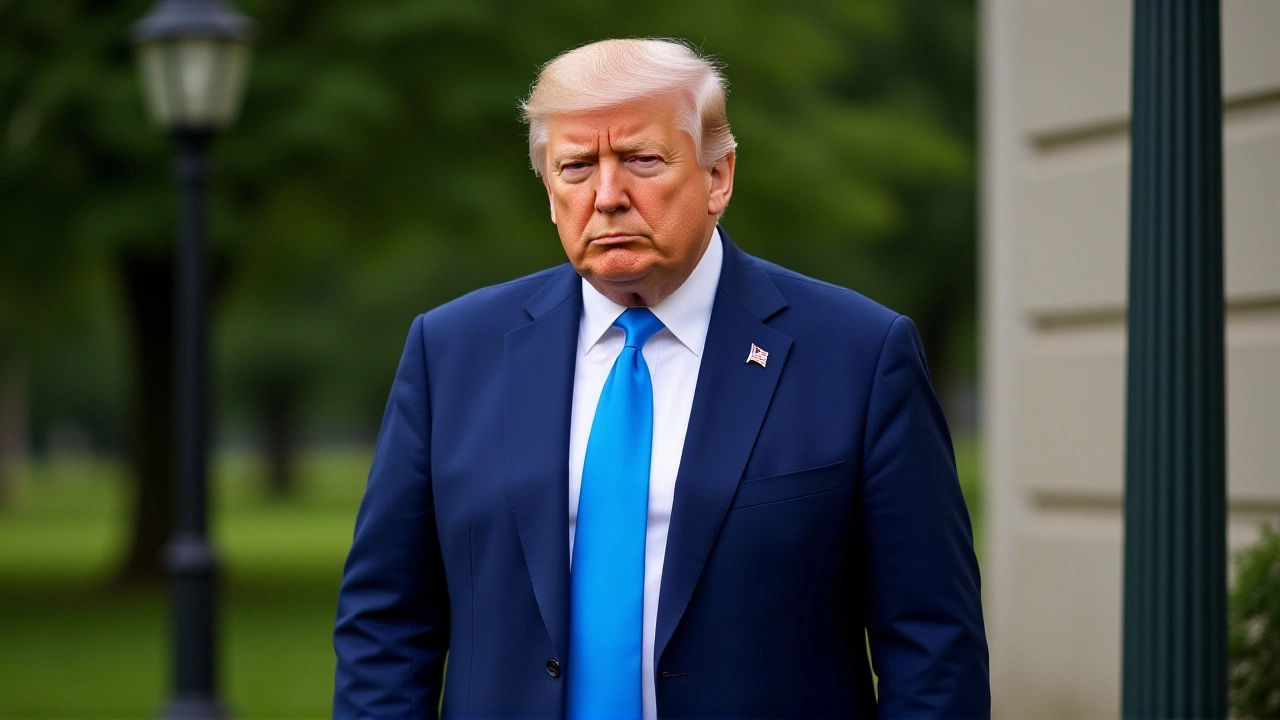On April 5, 2025, at 12:01 a.m. Eastern Daylight Time, a new economic reality took hold across American storefronts, factories, and shipping ports: every imported good, no matter its origin, faced a 10% tariff. President Donald J. Trump didn’t just raise taxes on trade—he rewrote the rules of globalization overnight, declaring a national emergency under the International Emergency Economic Powers Act to protect what he called America’s "sovereignty and economic security." Just four days later, on April 9, the real punch landed: 57 countries with the largest U.S. trade deficits saw tariffs spike from 11% to as high as 50%. This wasn’t diplomacy. It was economic warfare—with receipts.
The Mechanics of a Trade Earthquake
The White House fact sheet released on April 5 laid out a two-tiered assault. The universal 10% tariff applied to every nation, including allies like Japan and Germany. But the targeted 57 countries—led by China, Vietnam, India, Mexico, and Germany—were hit with additional, escalating rates. The Wharton Budget Model (PWBM), which analyzed the policy on April 8, 2025, found that the average tariff on those 57 nations would climb to 31%. For some, like China, the total tariff burden could reach 50% after stacking on previous levies from February and March.By April 2025, the U.S. effective tariff rate had jumped from 2.5% to 27%, according to Wikipedia’s tracking of the second Trump administration’s economic policy. That’s higher than any peacetime level in modern American history. The United States Trade Representative (USTR) had been given a mandate on January 20, 2025, to review every trade relationship—fast. The result? Steel and aluminum tariffs at 25%, auto tariffs at 25% effective April 3, and now, this sweeping, economy-wide tax.
Who Pays? The Hidden Costs in Your Cart
Here’s the thing: tariffs aren’t paid by foreign governments. They’re paid by American consumers and businesses. The PWBM estimates a middle-income household will lose $22,000 over their lifetime due to higher prices and lower wages. Why? Because imported electronics, clothing, furniture, and even components for American-made appliances now cost more. Factories that rely on Chinese circuit boards or Vietnamese textiles will have to raise prices—or absorb the cost and cut jobs.And it’s not just households. The Peterson Institute for International Economics (PIIE), based in Washington, D.C., warned that U.S. agriculture and durable goods manufacturing will be hit hardest. Soybean farmers who export to China? They’ve already seen demand drop. Auto plants in Michigan that use Mexican parts? Their supply chains are snapping. PIIE’s analysis found inflation surged in 21 major economies, and U.S. GDP is projected to shrink by 6% over the long run. Wages? Down 5%.
But here’s the twist: the White House says it’s worth it. "Made in America is not just a tagline," President Trump declared. "It’s a national security priority." The administration points to a $1.2 trillion goods trade deficit in 2024—the largest in history—as proof of systemic failure under prior leadership. They argue that by forcing companies to reshore production, they’ll create better-paying jobs. The USTR’s 2025 Trade Policy Agenda even cites a 3.4% manufacturing growth rate during Trump’s first term—ten times the average from 2000 to 2016—as evidence the strategy works.

The Diplomatic Fallout: Allies, Retaliation, and Loopholes
The plan didn’t survive its first week intact. Between April 2 and May 10, 2025, the administration quietly carved out exceptions. Canada and Mexico, under the United States-Mexico-Canada Agreement (USMCA), were granted major relief. Their tariffs were rolled back to near-zero on most goods. Why? Because 40% of U.S. agricultural exports go to Canada and Mexico. Shutting them down would have triggered food shortages and price spikes at home.Europe? Not so lucky. J.P. Morgan Global Research reported Trump was preparing a 30% tariff on EU goods—targeting luxury cars, wine, and machinery. The European Central Bank responded with threats of its own tariffs on American tech and farm products. Meanwhile, China imposed retaliatory duties on U.S. aircraft and soybeans, and the Shanghai stock market dropped 12% in three days. The PIIE’s fifth scenario—where dollar depreciation triggers capital flight from U.S. assets—now looks less like a hypothetical and more like a countdown.
What’s Next? The Long Game of Economic Isolation
The tariffs are indefinite. They remain in place until Trump declares the "threat" resolved. That’s not a date. It’s a weapon. And it’s being used to pressure nations into bilateral deals. Countries like Brazil and Indonesia are already sending emissaries to Washington, offering to buy more U.S. energy or reduce their own tariffs on American goods. It’s classic hardball diplomacy—economic coercion disguised as national defense.But there’s a cost to this isolation. The U.S. imported $4.5 trillion in goods last year. Reducing that by $6.9 trillion over ten years means fewer global partners, fewer innovation channels, and fewer competitive pressures driving American productivity. The Stanford Institute for Economic Policy Research noted that Trump’s campaign promised to fund Social Security and Medicare through tariffs—not cuts. But if those tariffs crush the economy, tax revenue could fall, not rise. The math starts to unravel.

Historical Echoes: A Return to the 1930s?
This isn’t the first time America tried to wall itself off from the world. The Smoot-Hawley Tariff Act of 1930 raised duties on over 20,000 imported goods. The result? Global trade collapsed by 66%. Unemployment soared. Economists still debate whether it deepened the Great Depression—but most agree it didn’t help.Today’s tariffs are broader, deeper, and more technologically sophisticated. But the logic is the same: protect domestic industry by punishing foreign competition. The difference? In 1930, the world had fewer trade agreements. Today, it’s a web of supply chains that span continents. Pull one thread—and the whole thing frays.
Frequently Asked Questions
How will these tariffs affect everyday consumers?
Consumers will see higher prices on electronics, clothing, furniture, and even cars—many of which rely on imported parts. The Wharton Budget Model estimates a middle-income household will lose $22,000 over their lifetime. That’s not inflation—it’s a tax. And unlike income taxes, this one is hidden in every receipt.
Why were Canada and Mexico exempted from the worst tariffs?
Canada and Mexico are the U.S.’s top two trading partners, accounting for over $1.5 trillion in annual trade. Shutting them down would have caused immediate shortages of fresh produce, auto parts, and energy. The USMCA agreement provided a legal framework for exemptions, and the White House recognized that economic self-harm would outweigh any political gain.
Is this policy legal under international trade law?
The World Trade Organization (WTO) considers blanket tariffs like these a violation of most-favored-nation principles. But the U.S. is invoking the IEEPA—a law meant for national emergencies like war or terrorism. Legal scholars argue this is a stretch. No court has ruled yet, but the WTO could authorize retaliatory measures, potentially triggering a global trade war.
What happens if other countries retaliate?
Retaliation is already happening. China has hit U.S. soybeans and aircraft with new tariffs. The EU is preparing duties on American tech and farm goods. The White House says it can raise tariffs further under IEEPA—but that risks a spiral. The PIIE warns that in a full retaliation scenario, U.S. employment could drop by 2.1 million jobs by 2030.
Could this lead to a recession?
Most economists say yes. The Wharton model projects a 6% drop in long-run GDP. The Peterson Institute warns inflation is already accelerating. With consumer spending—70% of the U.S. economy—under pressure, and business investment slowing due to supply chain uncertainty, a mild recession by late 2026 is a real possibility.
How does this affect U.S. manufacturing jobs?
Some jobs will return—especially in steel, aluminum, and basic assembly. But automation means fewer workers are needed. The PIIE found that while manufacturing output may rise slightly, employment gains will be minimal. Meanwhile, millions of jobs tied to imports—logistics, retail, warehousing—could shrink. The net effect? Likely a loss of hundreds of thousands of jobs overall.




